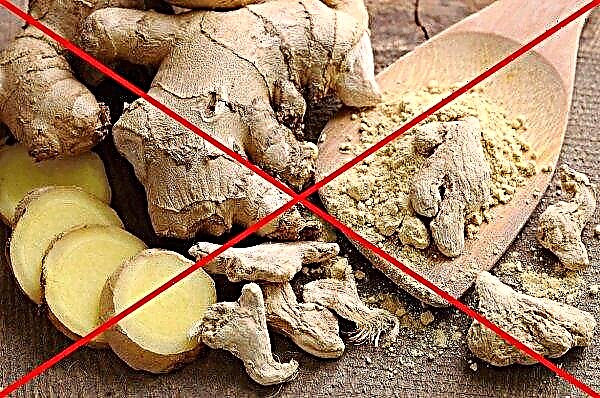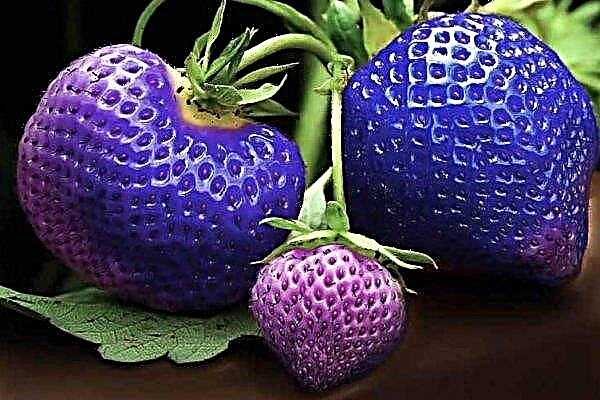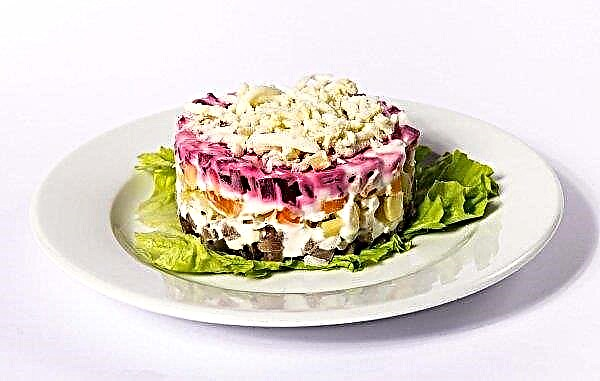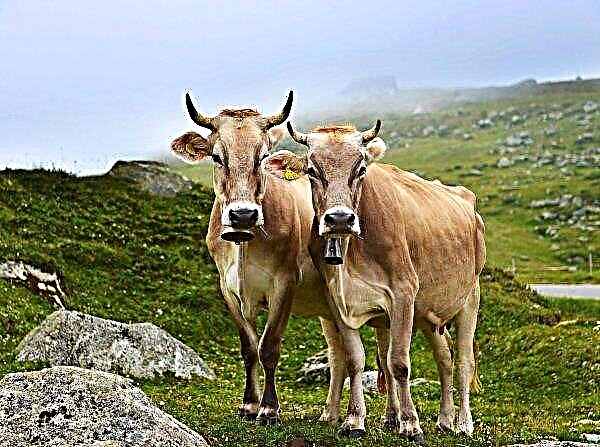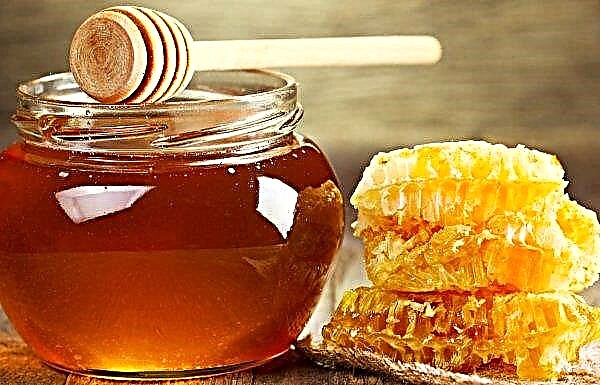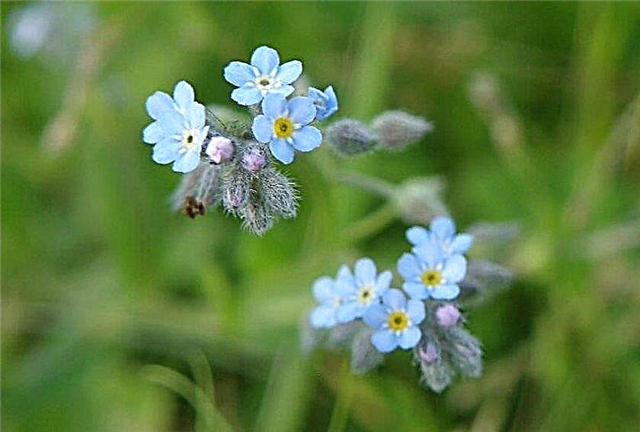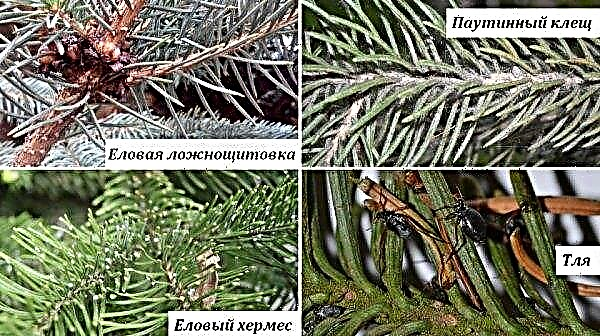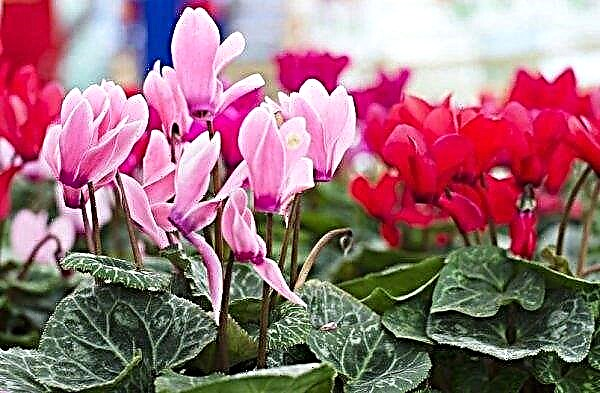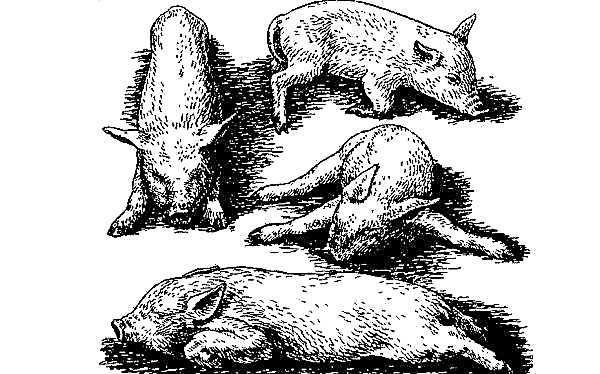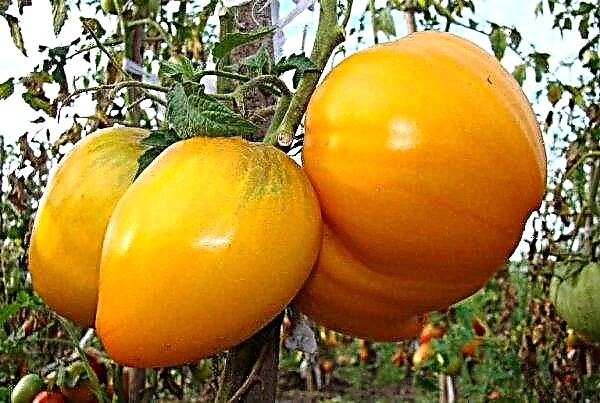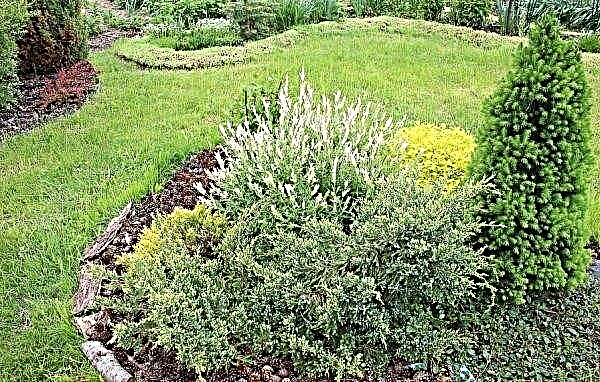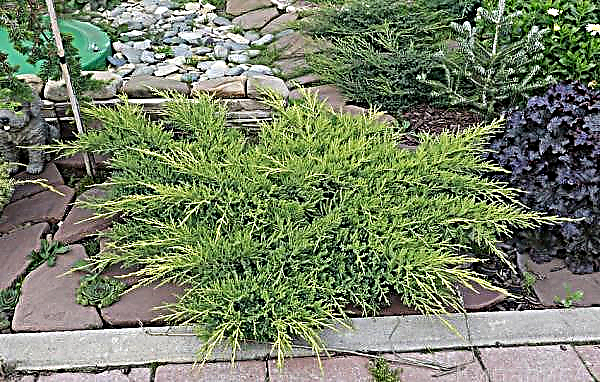Onions are used in many dishes and preparations. Varieties of onions, which have good keeping quality and can be used to produce greens, are of interest to gardeners. It is this variety that is Manas onion.
Description and characteristics of onions Manas
The Manas onion variety is a multi-bud species, which means it is great for growing on greens. At the same time, it forms bulbs weighing 80–150 g with excellent shelf life (up to 8 months). They have a well-developed root system. The feathers have a dark green color, on which a slight wax coating is observed.
Bulbs of one-dimensional size, rounded in shape with a husk of orange-yellow color. Juicy white flesh with a semi-sharp taste has a good density. Contains 9.1% solids.
Did you know? The ancient Greeks considered the bulb a symbol of the universe. Onion flakes were equated with celestial spheres. They were brought as a gift and used for treatment.
The variety tolerates drought and some diseases. He knows how to adapt to different climates, but the largest crops are harvested in a dry continental climate. With drip irrigation, the yield may exceed 95 t / ha.
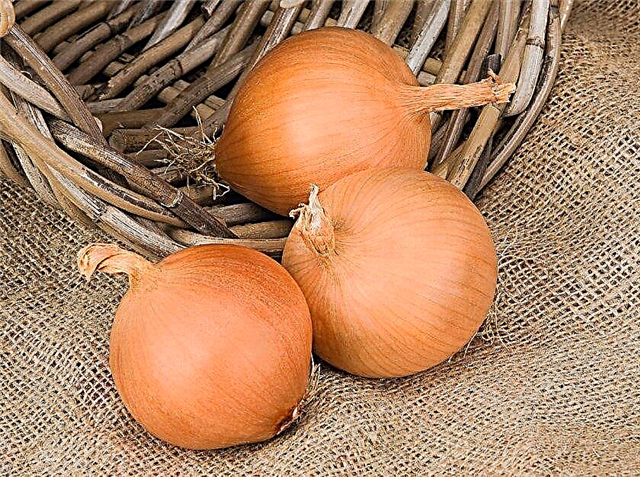
Ripening time
Bulbs of the Manas variety are harvested on 110–115 days from the appearance of seedlings. These are average ripening periods. From the site where it was grown to produce greenery, the feather is collected from the end of July. The onion from which the feathers were cut is no longer suitable for receiving bulbs.
Disease resistance
Onion Manas has good immunity. It is resistant to oversporosis, root rot and fusarium.
The most suitable growing conditions
The bow area should not be shaded or flooded. Bulbs develop well in long daylight hours, so the culture should be sown in the early stages.
This culture prefers soils loose and fertile with neutral acidity. The optimal level is 6.0–7.0 pH. The culture is responsive to mineral fertilizers containing nitrogen, phosphorus, potassium and the trace element boron.
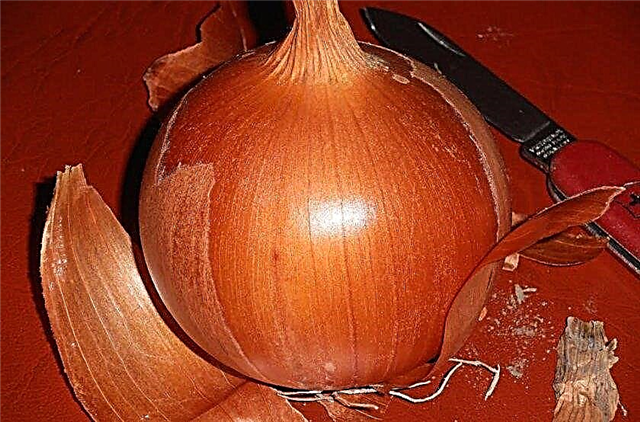
The optimum temperature for seed germination is the interval +18 ... + 20 ° C, although they can germinate at much lower temperatures (+ 1 ... + 2 ° C), but shoots will appear much later in cool weather. Onion sprouts can tolerate small frosts to -1 ... -2 ° C. The root system actively grows at + 10 ... + 15 ° С. The green part develops optimally at +18 ... + 20 ° C, and if it gets too warm (above + 25 ° C), the feathers begin to grow slowly.
When germinating seeds, high humidity is required. During the formation and growth of the bulbs, he needs good hydration. When the bulbs are already formed (August-September), dry weather is needed to ripen them.
Important! Do not plant onions repeatedly in the same place or after carrots, garlic, in order to avoid depletion of the soil.
Seed growing for seedlings
Onions Manas can be obtained from seeds within one season using the seedling method. In the southern regions, in Ukraine and Moldova, seeds can be sown in the soil, but it is more reliable to grow it with seedlings, since it is difficult to maintain optimal conditions in open ground conditions.
Seed preparation
For planting take fresh seeds or not older than 2 years. The following seed treatments are used:
- Disinfection. Planting material is kept in a 1% manganese solution for 40–45 minutes.
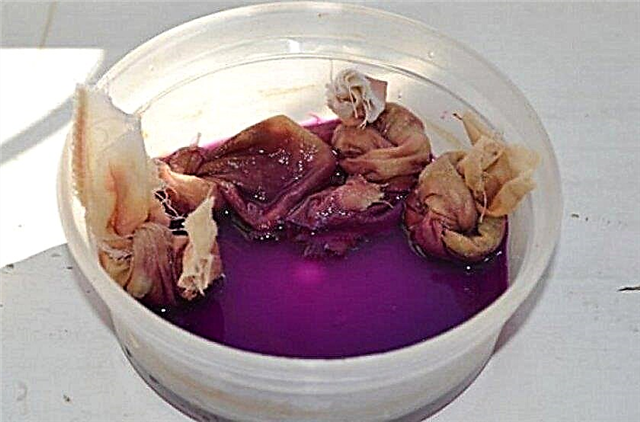
- Warming up. In this case, the seed material is placed in hot water at about 50 ° C for 25-30 minutes, and then placed cool for 2-3 minutes.
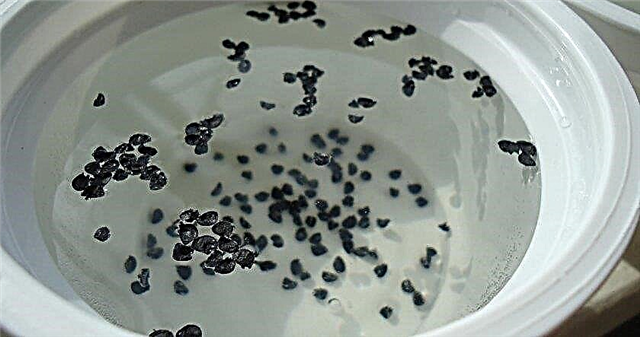
- Sparging. For this, the seeds are thrown into a jar of water, into which air is supplied from the compressor for the aquarium.
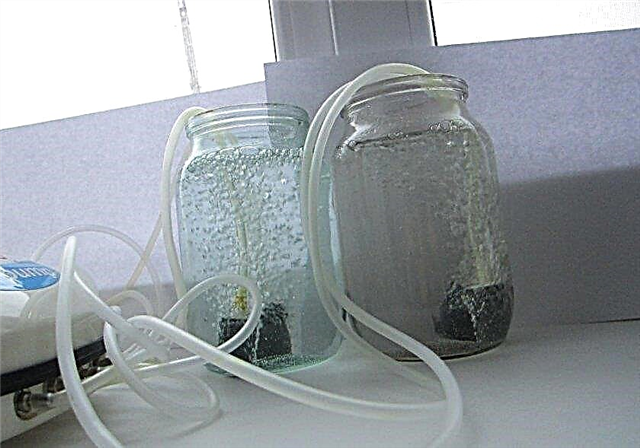
- Stimulation. Seeds are soaked in a solution of "Epina" or "Zircon" for 18 hours.
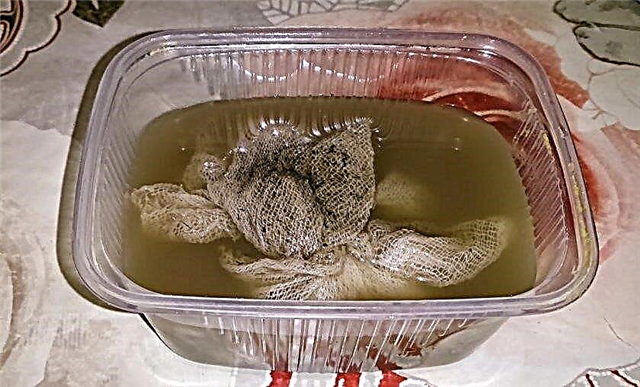
After carrying out these treatments, the seeds are poured into a tissue bag or wrapped in tissue and placed in a saucer with water at room temperature for a day. Water is changed every 6–8 hours. Then the swollen seeds are placed between wet rags and put in a warm place for 2-3 days. The fabric should not dry out, so it is moistened as it dries. Seeds that have sprouted can be planted.

Selection of containers for growing
Planting material is sown in wooden boxes or plastic containers. This is a convenient reusable container that is well-transported and transported. Worry about drainage. You can use cassettes.
Did you know? From ancient times, Indians grew onions. At first it was used mainly for medicinal purposes and was called “Charvaka-Samshita”. Now India is the largest exporter of this vegetable.
The process of planting seeds and their further care
Onion seeds are sown from February 1 to February 20 in a container with nutrient soil, forming row spacings of 5-6 cm. The approximate seed consumption of 15-20 g per 1 m². Initially, the temperature is maintained at +18 ... + 25 ° C, and after the appearance of sprouts, it is reduced to + 15 ... + 16 ° C. Lowering the temperature regime helps to avoid stretching the seedlings.
For better growth and development, it is recommended that plants be fed with a solution of bird droppings, which is prepared in a ratio of 1 to 10. You can use ready-made complex fertilizers, for example, Vermisol or Gumisol. If ordinary, rather than nutritious soil was used, then top dressing is carried out after the appearance of the first leaf every 10 days.

Open transplant
After 50-60 days, seedlings can be planted in open ground. At this point, the plant should form 3-4 true leaves and a well-developed root system. Before planting seedlings abundantly watered. Seedlings are sorted by rejecting weak or damaged plants.
Important! When planting, the roots should not be wrapped to the top. They should be carefully straightened.
So that the seedlings are better adapted in the open field it is advisable to cut the leaves by one third, as well as cut the roots. Thus, seedlings can be planted faster and easier, and cut leaves will reduce the evaporation of moisture, which will allow the onion to take root well on the site. The planting depth of onion seedlings should be 1 cm deeper than it had previously grown. The distance between plants should be 15–20 cm. It is recommended that 46–60 cm be maintained between rows.
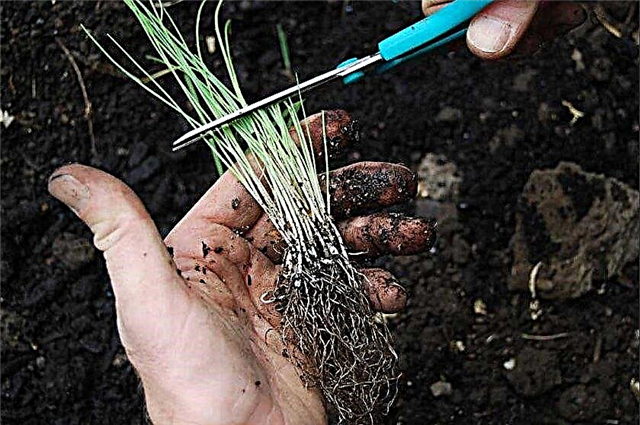
Cultivation and care
In order to get a good harvest, it is necessary to organize proper care for the vegetable crop.
Site selection and soil preparation
In order for Manas onion to give juicy greens, you need to choose a suitable site for planting. Onions prefer light nutritious soil with a moderate level of moisture, so there should be no stagnation of water at the landing site. The site should be well lit. Good precursors for this plant culture are legumes, cabbage, potatoes, tomatoes, cucumbers, zucchini.
If the soil is clay, then during the autumn digging make 1 bucket of river sand and 2 l of sawdust, which were previously treated with urea. When the soil has a high level of acidity, it is necessary to produce it in the fall.
In the spring, when the earth dries out, it is necessary to fertilize the site with ammonium nitrate based on the ratio of 1 teaspoon per 1 m². The landing area is leveled and slightly compacted. Then, so that the earth warms up well, pour hot water at about + 50 ° C and cover it with a film for 2-3 days.

Watering and fertilizer
After planting the bulbs, the first 4 weeks of the bed are regularly watered - 1 time every 3 days. After hydration, spend 1 time in 7-10 days. In the first half of the growing season before the onion formation begins, the soil should be moistened 0.3 m in depth. Watering is completely stopped 21–28 days before harvest.
To get a high and high-quality crop, it is recommended to feed. 20 days after the planting material is planted, the beds can be fertilized with a solution of manure or chicken droppings based on a ratio of 1 to 10. For 10 l of a bucket of such a solution, 25 g of urea must also be added. One bucket leaves on 10 m².
The next fertilizer application is carried out in mid-July. For this purpose, top dressings containing phosphorus and potassium are used. Such top dressing contributes to the accumulation of carbohydrates in the bulbs, which accelerates their maturation and increases stamina.
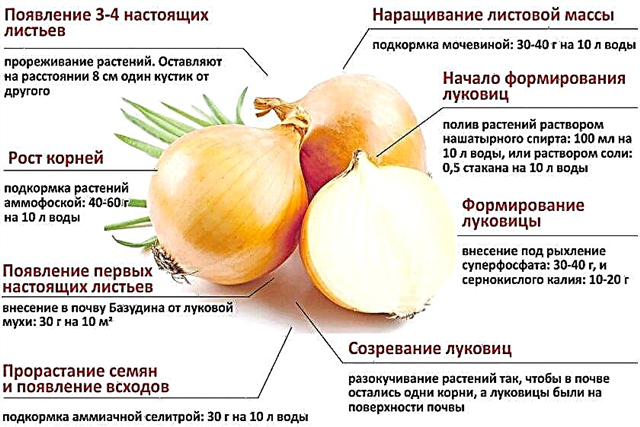
When growing onions on a feather, in order to avoid yellowing of greens, planting with plants is fertilized with ammonium nitrate based on a ratio of 2 g per 1 m². The first time such top dressing is carried out after cutting feathers, and then repeated after 14 days.
Loosening the soil and weeding from weeds
After moistening, it is necessary to loosen the soil. This process will improve the flow of oxygen and moisture to the plant. Along with loosening, it is recommended to remove weeds that obscure the planting, as well as pull nutrients and moisture from the soil. Moreover, weed grass is a breeding ground for pests and various diseases. Loosening is recommended to a depth of about 6 cm. For the entire period, at least 4 loosening should be carried out.
Important! You can not carry out the earthing up of onions, as this process slows down the ripening process of onions.
The last time you need to loosen the earth 30 days before harvesting. At the same time, they slightly rake the earth from the bulbs to form larger root crops. If the harvest time is suitable, but the onion feathers remain green and the neck is thick, then it is recommended that 7 days before harvesting, the roots are trimmed with a shovel 5-6 cm below the bulb.
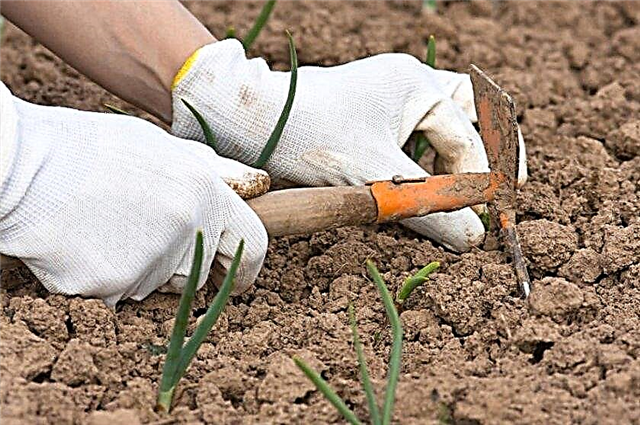
Plant pests and diseases
Under adverse conditions or non-compliance with agricultural practices of growing onions can be affected by some diseases and pests.
Consider the main diseases of this plant culture:
- Powdery mildew. This fungal disease often occurs with high humidity. It leads to deformation of the bulb and a decrease in the quantity and quality of the crop. Identify this nuisance by yellowing the plant. Affected specimens should be torn out and dried, as well as treatment with fungicidal agents such as Fitosporin M.
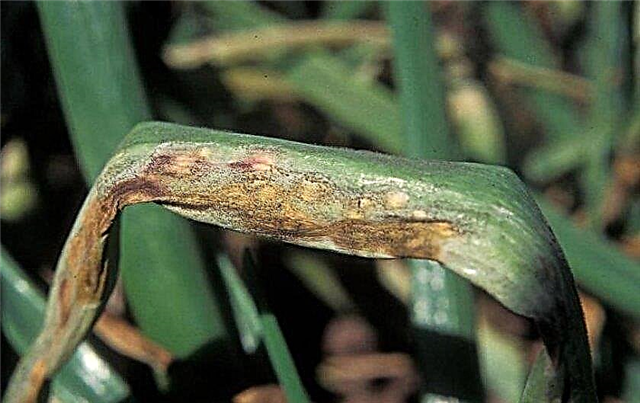
- Gray rot. Often affects the bulb through the soil. To avoid its occurrence, it is necessary to conduct soil treatment with Bordeaux liquid, as well as to make nitrogen-containing fertilizers. Affected specimens should be torn out and disposed of.
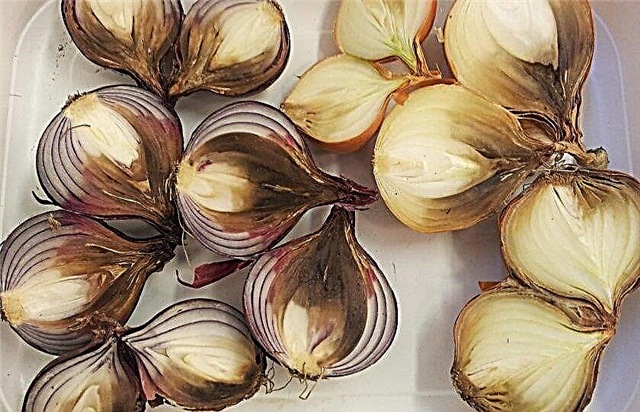
- Yellow dwarfism. Plants slow down their growth, undergo deformation, and feathers turn yellow. There is currently no effective methodology for treating this disease.
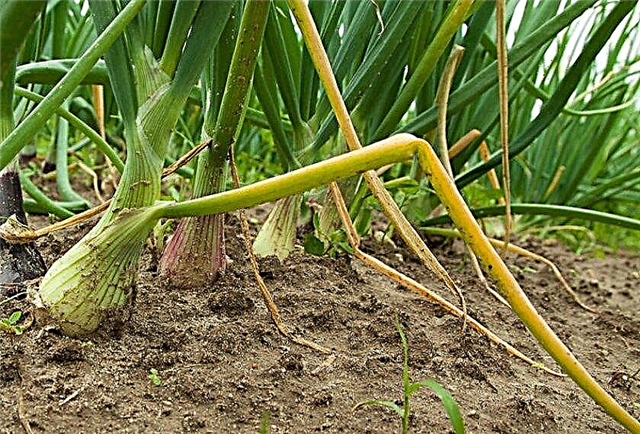
- Mosaic. Feathers change their color and surface. A mosaic pattern forms on the stem. Often, infection occurs due to insects. This disease is not treated. In this case, attention should be paid to general preventive measures.
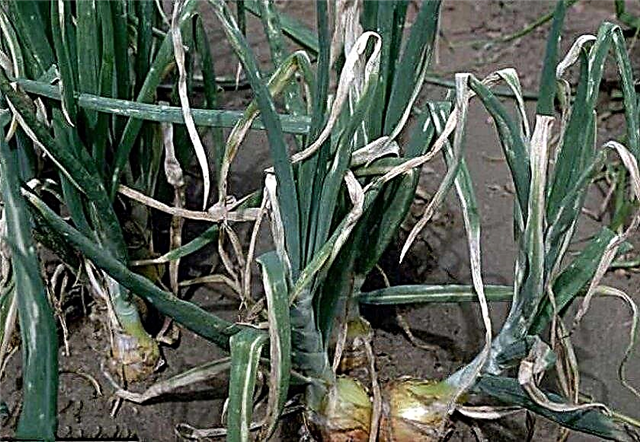
The main pest for this plant crop is an onion fly. The onion stops growing on the feather and turns yellow. From this pest, spraying with saline (150 g per 5 liters of water) helps. They are recommended to carry out treatments 1 time per month, but no more than 3 times. It helps to water with a solution of ammonia (3 tablespoons per 10 liters), but it is worth considering that the solution should not fall on the leaves. The pungent smell of ammonia will scare off insects.
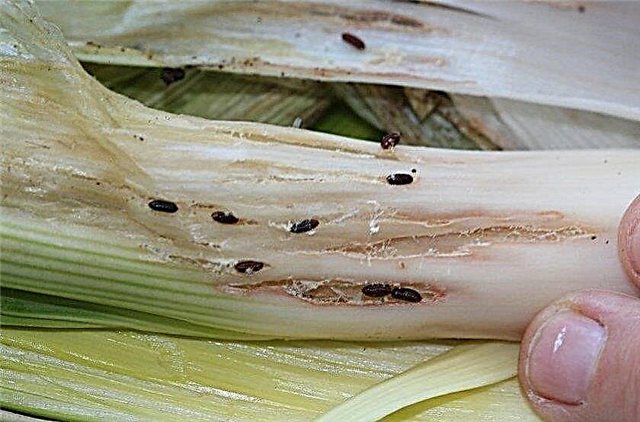 This insect makes a clutch, and the larvae fall inside the bulb.
This insect makes a clutch, and the larvae fall inside the bulb.
The best protection against pests and diseases is prevention. Gardeners recommend adhering to the following preventive measures:
- observe crop rotation;
- disinfect planting material;
- dig a site for landing for the winter;
- remove plant debris in the fall;
- carry out loosening and removal of weed grass, which are a nursery for pests and diseases;
- do not thicken the onion planting;
- prevent stagnation of water on the landing site;
- conduct a regular inspection to identify pests and diseases in order to take timely measures to eliminate the problem.
Did you know? Onion consumption helps burn fat and remove cholesterol, helps to destroy blood clots, reduces the risk of cancer and heart disease.
Harvesting and storage
For the entire growing season, you can get up to 4 slices of onion Manas. Gardeners recommend to grow this tour crop in length of no more than 0.4 m, as in this case you can get juicy greens without a bitter taste. Harvested from late July to early August. Fresh greens are not stored for long, so for a longer period it is better to freeze it. For this purpose, green onion feathers need to be cut and placed in small containers. They are then placed in the freezer.
Bulbs of Manas variety can be stored for up to 8 months in a cool dark place (cellar, underground). After digging, they are well dried for 2 weeks, sorted, removing damaged and spoiled specimens. Feathers are cut off, leaving only 5 cm. You can store onions in boxes, bags, scythes at 0 ... -1 ° C and humidity 75–90% (in the basement) and at +18 ... + 22 ° C and humidity 50–70 % (in the apartment).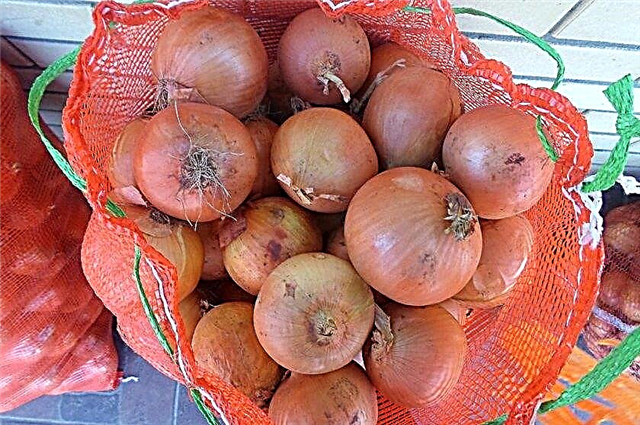
Onion Manas is great for getting onions that are well stored and for greens. It is optimally grown in seedlings.









